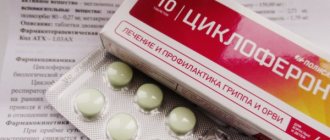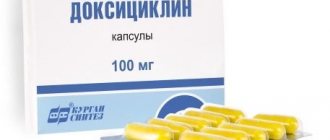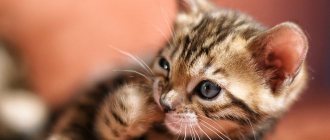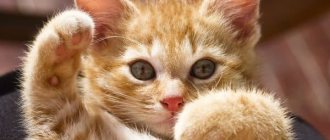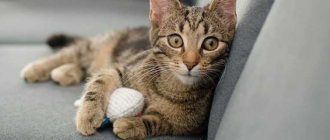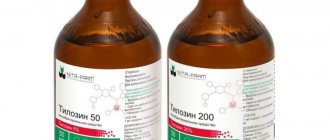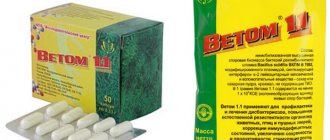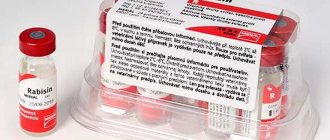The vitamin of this group is one of the most complex. It was synthesized in 1971, although the date of its creation is considered to be 1948, when B12 in crystalline form was isolated from the liver.
Many people are familiar with the vitamin under the names cyanocobalamin, cobamamid, cobalamin. In recent years, vitamin B12 has been prescribed for dogs. Indications for its use are very different.
Importance of Vitamin B12 for Animals
According to some farmers, enriching diets with water-soluble B vitamins is only relevant for monogastric animals, since the need for nutrients in livestock with a multi-chambered stomach is provided by the microflora of the gastrointestinal tract. In this regard, the introduction of B vitamins into diets is due to the onset of technologically difficult periods (for example, dry wood) or the need to eliminate the consequences of various diseases and ailments.
Vitamins of group B12 are cobalt-containing biologically active substances called cobalomins. This category includes several elements, but a number of sources call vitamin B12 exclusively cyanocobalamin. It is worth noting that this point of view is a generally accepted norm in animal science and in matters of animal feeding, although this to some extent contradicts the theory of biochemistry.
When compiling complete, balanced diets for meat and dairy animals, one should focus not only on their need for proteins, fats, carbohydrates, but also do not forget about vitamins and minerals, which have a great influence on the basic functions of the animal body. For the stable functioning of enzyme systems, cattle, in addition to the substrate and the enzyme, require non-protein substances - cofactors. These can be both organic compounds and metal ions.
Cobalt is the last (seventh) trace element that must be present in the diet of farm animals according to Russian standards. And here we come back to vitamin B12. One molecule of this vitamin contains 4.5 weight percent trivalent cobalt.
Vitamin B12 is involved in nitrogen, nucleic acid, carbohydrate, mineral and other types of metabolism in the body of animals. A number of experts believe that cobalt is involved in metabolic processes not only as part of the synthesis of vitamin B12. This substance also affects the functioning of enzyme systems.
Cobalt preparations can be neglected if the animals' needs for it are met through a balanced diet (regardless of the rate of vitamin B12 intake). This is due to the fact that cobalt, in addition to participating in the synthesis of vitamin B12, is contained in the active center of two enzymes: 2-biotin-protein-methylmalonine-CoA carboxyltransferase and propionyl-CoA carboxylase.
The valuable substance takes part in the activation of the following enzymes: arginase, phosphatase, catalase, aldolase, decarboxylase and inhibits (normally) the activity of urease, cytochrome oxidase, succinate dehydrase.
Contraindications to the use of the drug
This antibacterial agent is very strong. Ceftriaxone often causes side effects, and there have even been cases of animal death due to improper use of the drug. Therefore, it can be used for treatment only after examining the animal in order to exclude the presence of contraindications. It is not recommended to use Ceftriaxone for cats in the following cases:
- with renal failure;
- in case of liver dysfunction;
- during pregnancy and lactation;
- kittens;
- in the presence of ulcers in the gastrointestinal tract;
- if you are allergic to antibiotics of the penicillin group.
Expert opinion
How does a lack of vitamins and minerals affect the reproductive function of cows?
S. G. Kuznetsov, Doctor of Biological Sciences, Professor, L. A. Zabolotnov, Doctor of Biological Sciences:
– In order for dairy farming to generate high income, birth rates should be approximately as follows: 95-98 calves per 100 cows. But it is worth noting that on some farms a quarter of the cows (and sometimes more) are classified as dry cows. Of course, a significant percentage of such animals reduces the profitability of costs for feeding, caring for and maintaining cattle.
A variety of factors can influence the infertility and barrenness of cows. However, in most cases, destabilization of reproductive function in cows is in no way related to diseases of the body. Healthy cows after calving often do not show signs of sexual cyclicity for a long time.
According to the results of studies, more than half of these animals have ovarian hypofunction, the development of which is caused by a lack of vitamins and minerals in the diet (which is especially important in the winter and spring months).
"Ceftriaxone" for cats: instructions for use
You can use this antibiotic to treat your pet only as prescribed by a doctor, and strictly following the dosage. The drug is available in powder. Therefore, first you need to dilute it with Novocaine. Cats should not use Lidocaine for dissolution. For 1 g of antibiotic you need to take 2 ml of anesthetic and 2 ml of water for injection. The medicine is administered to the cat intramuscularly or intravenously through a catheter. In the latter case, this must be done by a doctor.
How much Ceftriaxone should be injected into a cat? The dosage is calculated depending on the weight of the animal:
- for small cats weighing less than 2 kilograms, no more than 0.5 ml of the drug solution can be administered at a time;
- larger pets need to be administered 1 ml of Ceftriaxone.
Injections should be given once a day, but sometimes the doctor recommends dividing the daily dose into two times. Treatment lasts from 7 to 10 days, depending on the severity of the animal’s condition. If the cat feels better before the end of this period, the injections are not stopped. You need to complete the full course prescribed by your doctor.
Animal owners need to know that after treatment with Ceftriaxone, the cat cannot be mated for 3 months, otherwise there may be complications during pregnancy, and the kittens may die.
Where do animals get vitamin B12?
Vitamin B12, unlike other B vitamins, is absent in plant foods and is produced only by binding cobalt by yeast or bacterial synthesis.
As we have already noted, the B12 molecule contains at least 4.5 weight percent trivalent cobalt. This suggests that the amount of vitamin B12 synthesized is proportional to the cobalt content in the diet.
However, research confirms that bacteria produce several other molecules that are structurally similar to vitamin B12 molecules, but do not have its biological properties. Most often, such substances are not retained in the body and are removed from it with other waste products. Therefore, we can conclude that enriching the diet of animals with cobalt does not always provide a sufficient amount of vitamin B12 in their body.
It is worth noting that cobalt and its compounds have a high level of toxicity (lethal dose for cows is 25 mg/kg body weight, with a daily dose for high-yielding cows - up to 20 mg/kg body weight), so enriching the diet of cows with cobalt compounds must be done very carefully. It is better if cobalt enters the body of farm animals from natural sources.
The source of cobalt for cows is plant feed. But keep in mind that the level of this element in the soil directly depends on the region, the type of soil (the least amount of it was found in regions with sandy loam, soddy-podzolic and marshy soils), as well as a number of other factors.
For example, plants are saturated with cobalt to a much lesser extent if the soil contains a large amount of certain minerals and their compounds (manganese, lime).
Precipitation also reduces the percentage of cobalt in soils, since under its influence it sinks into lower layers. Another significant factor is the type and condition of pastures. Thus, cereal crops, compared to side crops, absorb less cobalt. And annual pastures are not as rich in this element, unlike perennial ones.
Vitamin B12 has the greatest activity compared to other B vitamins. Even a millionth of a gram of vitamin B12 for animals per kilogram of weight can compensate for the body's need for the valuable substance in question.
Side effects after using the drug
Ceftriaxone for cats is often prescribed by veterinarians, but not all animals tolerate this drug. Many people experience serious disruptions in the functioning of many organs and systems when using it. The following side effects may occur:
- nausea and vomiting;
- flatulence, constipation, intestinal upset;
- allergic reactions, urticaria;
- difficulty breathing, bronchospasm;
- dysfunction of the liver and kidneys;
- deterioration of blood composition;
- problems with the urinary system;
- fungal diseases;
- headaches, dizziness.
Signs and methods of preventing vitamin B12 deficiency in animals
Lack of vitamin B12 in animals (hypovitaminosis B12) is a disease whose characteristic symptoms are: metabolic disorders (proteins, fats, carbohydrates), as well as destabilization of the functioning of endocrine and hematopoietic organs. Vitamin B12 deficiency is most often observed in pigs and poultry.
Animals with a multi-chambered stomach usually suffer from hypovitaminosis B12 if there is insufficient cobalt in the diet or with pathology of the proventriculus. In most cases, this disease affects the organisms of young animals.
Vitamin B12 deficiency in animals develops due to an unbalanced diet (namely, lack of animal feed or insufficient cobalt). In addition, the disease is provoked by various pathologies of the stomach and intestines, in which the synthesis or absorption of the valuable substance in question is disrupted.
Symptoms.
Slower growth rates, worsening appetite, decreased weight gain, increased excitability, anemia. In pigs with hypovitaminosis B12, weak, small, and sometimes non-viable offspring are born. In piglets, vitamin B12 deficiency is accompanied by coarsening of the hair, the appearance of eczema, loss of voice and sucking reflex, anemia, impaired coordination of the hind limbs during movement, and an increase in the size of the liver. There is a reduced amount of red blood cells, hemoglobin, and cyanocobalamin in the blood. According to the leukogram - neutrophilia.
If calves are fed milk low in vitamin B12, their growth may deteriorate, their appetite will decrease, and their coordination will be impaired.
Diagnosis.
It is diagnosed based on an analysis of the clinical picture, study of the diet and determination of the content of vitamin B12 in the blood serum. Vitamin B12 deficiency may be accompanied by other B vitamin deficiencies.
When is cyanocobalamin appropriate?
Instructions for the use of cyanocobalamin for a cat become a fundamental document in the treatment process. Veterinarians usually prescribe this vitamin to cats for the treatment of anemia caused by various reasons, for abnormalities and disturbances in the functioning of the liver, malfunctions of the digestive organs, neuralgia and neuritis, paresis, for the comprehensive elimination of dermatitis.
Injections of the solution are prescribed before operations for cats, as they help increase blood clotting. In the postoperative period, injections are given to cats to increase hemoglobin and accelerate regenerative processes.
Cyanocobalamin helps the cat eliminate the symptoms of poisoning with heavy metal salts. Vitamin B12 helps animals develop harmoniously and fully.
In what form should vitamin B12 be given to animals?
In many farms, roughage in the diet of animals is represented by hay and straw of low quality and low nutritional value. This does not allow the full potential of animals (especially imported ones) to be realized, which is why the farm annually loses almost a third of its possible milk yield. According to foreign experts, introducing vitamin B12 into the diet of animals can increase milk yield by more than 10% and milk fat content by 16% (the increase in indicators will be especially noticeable during the milking period and in first-calf heifers).
Additional introduction of vitamin B12 into the diet of animals increases the profitability of their care. There are several ways to enrich the animal body with vitamin B12:
Injection - the dosage of the beneficial substance should not exceed 5-10 mcg per kilogram of body weight (just do not forget about the high probability of injection stress).
Adding protected forms of vitamin B12 to premixes or feed.
Introduction to the diet of raw materials high in B vitamins and vitamin B12 in particular: provision of root vegetables (especially carrots), yeast. Remember that it is especially important to eat a balanced diet during the winter months.
Vitamin B12 is administered subcutaneously, intramuscularly or intravenously, observing the dosage indicated below (per animal):
Experts recommend paying special attention to creating conditions for activating the microflora, which is responsible for the synthesis of vitamin B12. The main factors in this matter are: a complete balanced diet, which includes the provision of high quality roughage or green matter with sufficient cobalt content, and control of the absorption of concentrated feed and high-fiber nutrition.
Are complexes capable of covering the lack of vitamins in the body?
Usually all complexes for animals are produced in tablets. However, in special cases they resort to injections, as the doctor tells how to inject them .
As for ready-made vitamins, the following are most often prescribed:
Canina;- Polidex;
- 8 in 1 Excel.
The quality of these products always remains at the highest level.
Canina: action, when and to whom it is prescribed
The complex has a strengthening effect.
Prescribed:
- kids;
- females during feeding;
- weakened animals;
- During the period of active physical training.
Polidex
The vitamins are made in the UK, they are natural, and of the highest quality.
8 in 1 Excel
Produced in the USA, they do not contain harmful dyes or other components, so they are suitable for babies and even pregnant dogs.
Vitamin B12 in feed additives and premixes for animals
To create vitamin B12 preparations, a specially selected complex of bacteria is grown industrially, which includes cellulose-decomposing, ammonifying, carbohydrate-fermenting, sulfite-reducing and methane-forming microorganisms. The first stage of fermentation of these microorganisms (lasts from 10 to 12 days) is accompanied by an intensive increase in the number of ammonifying and carbohydrate-fermenting bacteria that multiply in a slightly acidic environment (pH 5.0–7.0).
The remaining bacteria develop during the transition of fermentation to the alkaline phase (pH 7.0–8.5). It is worth noting that the vast majority are methane-producing bacteria, which produce 4-5 times more vitamin B12 than other participants in the biocenosis. Methane-forming bacteria multiply most actively in fatty acids and lower alcohols.
The nutrient medium is usually prepared using stillage from acetone-butyl production, purified from solid impurities by decatanation, with the addition of cobalt chloride (4 g/m3 and 0.5% methanol).
Cultivation of bacteria on an industrial scale begins with growing seed material (for 15–20 days) in devices with a capacity of 250 m3. After this, the resulting material is transferred to reinforced concrete fermenters, in which methane fermentation begins. In this case, fresh stillage is added to the lower part of the device (in a volume of 25% of the mass in the fermenter).
Methane mash, which contains vitamin B12, is concentrated in the upper part of the fermenter. Throughout the entire working process, it is necessary to monitor the pH of the environment, the level of volatile fatty acids and ammonia nitrogen, and also maintain the desired temperature (55–57 °C). The result of the fermentation process is a gas mixture that contains methane (65%) and carbon dioxide (30%). This mixture can be used as a heat source.
As a result of production, a liquid is obtained, which contains 2–2.5% dry matter and 1.1–1.7 mg/l vitamin B12. To prevent vitamin B12 for animals from being destroyed during the drying process, the liquid is acidified with hydrochloric or phosphoric acid to pH 6.3–6.5 and 0.2–0.25% sodium sulfite is added.
As a result of degassing and evaporation of the liquid, a concentrate is obtained, which is dried until its moisture content is 5–10%. To preserve its properties, the vitamin is mixed with bran or corn flour, and then sorted into plastic bags of 25 or 30 kg and packed in kraft bags. The shelf life of the composition should not exceed 12 months.
Dogs' need for vitamins (per 1 kg of body weight):
| Vitamin | Adult dogs | Puppies nursing |
| A (retinol) | 100 IU | 200 IU |
| D (calciferol) | 7 IU | 20 IU |
| E (tocopherol) | 2 mg | 2.2 mg |
| K (phylloquinone) | 30 mcg | 60 mcg |
| B1 (thiamine) | 20 mcg | 30 mcg |
| B2 (riboflavin) | 40 mcg | 90 mcg |
| B3 (pantothenic acid) | 50 mcg | 200 mcg |
| B4 (choline chloride) | 33 mg | 55 mg |
| B5 (nicotinic acid) | 240 mcg | 400 mcg |
| B6 (pyridoxine) | 20 mcg | 50 mcg |
| B12 (cyanocobalamin) | 0.7 mcg | 0.7 mcg |
| Sun (foliacin) | 8 mcg | 15 mcg |
| N (biotin) | 0.5 mg | 1.5 mg |
| C (ascorbic acid) | 1 mg | 1 mg |
Treatment and prevention of hypovitaminosis B12 in animals
If pigs are diagnosed with hypovitaminosis B12, it is necessary to pay attention to the conditions in which they are kept. In addition, the animals’ diet should be enriched with feeds that have a high concentration of vitamin B12 (these include meat and bone and fish meal, milk, skim milk, whey, propionic acidophilus broth culture, methane fermentation feed concentrate).
For the treatment of diseases, as well as for the prevention of PABA and biovit, pregnant sows are given two months before farrowing, and suckling sows are given vitamin B12 in the first 10 days after farrowing at the rate of 5-10 mcg of vitamin B12 per 1 kg of animal body weight twice a day. day. To restore vitamin B12 reserves, a solution for intramuscular administration is also used: the dosage should not exceed 5 mcg per 1 kg of body weight (piglets from 25 to 100 mcg, sows from 500 to 1000 mcg), the course of injections is 10-15 days.
It is advisable to review the diets of pregnant and lactating sows, weaned piglets, replacement pigs and introduce feed containing complete protein, B vitamins and minerals, especially cobalt. Typically, pigs require 25-30 mcg of vitamin B12 per 1 kg of dry feed. Please note that this need directly depends on the presence of methionine, cobalt, vitamins B3, B4, B6, B and other macro- and microelements in the diet. Do not forget to pay due attention to the living conditions of animals, since they also affect the health of your charges.
Features of the use of drugs for animals
Cyanocobalamin is available in tablet and injectable form. The latter option is absorbed better and faster in the body, but the intramuscular injection is considered the most painful. After the procedure, animals may still limp for some time. If the cat has an intravenous catheter, it will help ensure a greater effect from the procedure, and it will be painless.
The usual dosage of Cyanocobalamin for a cat is 250 mcg per animal weighing up to 5 kg . This is half a standard ampoule of Cyanocobalamin. You can buy veterinary Cyanocobalamin, which is sold in large 100 ml bottles.
The vitamin can also be included in a complex of other substances in one preparation. Therefore, in this case, the dose is calculated individually for each individual cat. It is advisable to seek help from a veterinarian who will make a prescription in accordance with the existing pathology. The minimum length of the preventive course is at least 2 weeks. The standard duration of treatment for mild forms of anemia is 1 month.
"Ceftriaxone" is a strong antibacterial agent that is active against most microorganisms. It inhibits the growth of the walls of pathogenic bacteria, so addiction to it does not occur. Ceftriaxone is used quite often for cats. It is needed for the treatment of severe infectious diseases, as well as for the prevention of infection after surgery. But this drug can only be used as prescribed by a veterinarian.
Reviews about the use of the drug "Ceftriaxone"
Many owners of furry pets write that this antibiotic saved their pet from a serious infection. Basically, Ceftriaxone is prescribed after sterilization operations. The owners note that this medicine helped to avoid complications, the wound healed quickly, and there was no pus. Many animals tolerate the drug without side effects; the only drawback of these injections is that they are very painful to install. But there are also reviews that note that the cat developed a severe allergic reaction, vomiting or impaired kidney function. If you do not pay attention to side effects after the first injection, the animal may die.
Active ingredient: cyanocobalamin
Release form: Solution for injection, 0.05% in ampoules of 1 ml No. 10
Compound
1 ml of solution contains cyanocobalamin 0.5 mg (500 mcg); excipients: sodium chloride, water for injection.
Indications for use
Malignant, posthemorrhagic and iron deficiency anemia; aplastic anemia in children, nutritional anemia; anemia caused by toxic substances and drugs, anemia associated with vitamin B12 deficiency, regardless of the causes of deficiency (gastric resection, helminthic infestations, impaired absorption from the intestines, pregnancy). Polyneuritis, trigeminal neuralgia, radiculitis, causalgia, diabetic neuritis, amyotrophic lateral sclerosis. Sprue (together with folic acid), liver diseases (hepatitis, cirrhosis), radiation sickness.
Contraindications
The use of cyanocobalamin is contraindicated in cases of erythremia, erythrocytosis, acute thromboembolic diseases, and neoplasms, except in cases accompanied by megaloblastic anemia and vitamin B12 deficiency. Children under 3 years of age for the dosage form at this dose.
Directions for use and doses
Cyanocobalamin is administered intramuscularly, subcutaneously or intravenously, and in case of amyotrophic lateral sclerosis, also intralumbarally. Treatment for adults. For anemia caused by toxic substances and drugs, anemia occurring with vitamin B12 deficiency, regardless of the causes of deficiency (gastric resection, helminthic infestations, impaired absorption from the intestines, pregnancy) is prescribed in doses of 100 - 200 mcg (0.1 - 0. 2 mg) every other day until remission is achieved. For malignant anemia with symptoms of funicular myelosis and for macrocytic anemia with damage to the nervous system, cyanocobalamin is used for adults in a single (daily) dose of 400-500 mcg (0.4-0.5 mg). In the first week, it is administered daily, and then at an interval between administrations of 5-7 days (folic acid is prescribed at the same time). In severe cases, it is administered into the spinal canal, starting with a single dose for adults of 15-30 mcg (for such doses Cyanocobalamin of other concentrations is prescribed), and with each subsequent injection increasing the dose (50, 100, 150, 200 mcg). Intralumbar injections are given every 3 days, a total of 8-10 injections are required per course. During the period of remission in the absence of symptoms of funicular myelosis, 100 mcg twice a month is prescribed to maintain therapy; in the presence of neurological symptoms, adults are prescribed 200-400 mcg (0.2-0.4 mg) 2-4 times a month. For amyotrophic lateral sclerosis, polyneuritis, trigeminal neuralgia, radiculitis, causalgia, the drug is administered in increasing doses to adults from 200 to 500 mcg (0.2 to 0.5 mg) per injection per day, with improvement of the condition - 100 mcg per day. The course of treatment is up to 2 weeks. For liver diseases (hepatitis, cirrhosis), adults are prescribed 100 mcg every other day for 25-40 days.
For acute radiation sickness, diabetic neuropathy, sprue, adults are prescribed 60-100 mcg daily for 20-30 days. The duration of treatment with cyanocobalamin and repeated courses depend on the nature of the disease and the effectiveness of treatment.
Treatment of children. For posthemorrhagic and iron deficiency anemia, children aged 3 years and older are prescribed 30-100 mcg 2-3 times a week. For aplastic anemia, children over 3 years of age are administered 100 mcg daily until clinical and hematological improvement occurs. The average therapeutic dose for children is 1 mcg/kg daily, the average duration of use of the drug is 10 days.
By-effect
With increased sensitivity to cyanocobalamin, allergic phenomena, headache, dizziness, nervous agitation, pain in the heart, and tachycardia may occur.
Read/leave a review about the drug Cyanocobalamin
If your cat has a disease caused by pathogenic bacteria, your veterinarian will prescribe antibiotic therapy. One of the most commonly used broad-spectrum antibacterial drugs is Ceftriaxone.
This drug is prescribed to both people and animals for infections of the respiratory tract, gastrointestinal tract, urinary system, infections of the ENT organs, meningitis and sepsis. Ceftriaxone is also administered to prevent infectious complications after surgery.
The medicine belongs to the 3rd generation cephalosporin family. Belongs to the group of bacteriostatic drugs that inhibit the growth and reproduction of bacteria. The mechanism of action of Ceftriaxone is based on blocking the construction of the cell wall of bacteria; in large doses it acquires a bactericidal effect: it destroys pathogenic microorganisms.
After administration to a cat, the drug is quickly and completely absorbed, its bioavailability is 100%. The effect occurs on average 2-3 hours after injection.
Despite the wide range of effects, some strains of Staphylococcus aureus, Enterococcus and Bacteroides fragilis are resistant to Ceftriaxone.
Ceftriaxone injections are prescribed to cats for:
- 1. Treatment of various infectious diseases:
- Gastrointestinal tract;
- Respiratory system;
- Biliary tract;
- Kidney and urinary tract;
- Osteomyelitis (bone infection);
- Meningitis (bacterial infection of the membranes of nerve tissue).
2. Prevention of postoperative complications.
3. Prevention of infection of abrasions and bites from other animals, along with anti-rabies serum.
Ceftriaxone is partially excreted in the urine, so it is very important to consider the condition of the animal's kidneys before administration. For a cat with a history of liver, kidney and gall bladder diseases, the drug is either contraindicated, or the dosage of administration is adjusted.
The medicine is prohibited for the treatment of kittens, since the toxic effect of the medicine on the delicate body of the animal outweighs the benefits. Ceftriaxone should not be given to pregnant or lactating cats. Pregnant cats may have a miscarriage after administration of the drug or subsequently give birth to sick offspring. In nursing cats, the medicine passes into the milk and has a toxic effect on kittens.
At least three months must pass from the end of the course of Ceftriaxone before the planned mating of animals. During this time, the drug is completely eliminated from the body. Otherwise, there is a high risk of genetic disorders in the planned offspring due to the teratogenic effect of the drug.
For home treatment, as prescribed by a veterinarian, intramuscular administration of the drug is most often used. This method has a number of advantages:
- 1. Technical ease of implementation. Almost any owner, if he carefully follows the instructions, will be able to administer the required dose of the drug to his pet.
- 2. Uniform and smooth distribution of the drug in the body. After administration, the concentration of the drug in the lesions accumulates at a constant rate, without changes. This, in turn, reduces the risk of a reactive allergic response from the body.
Treatment lasts one to two weeks.
If during this time the symptoms of the disease have not gone away or their severity has not noticeably decreased, you need to urgently take the cat to the veterinarian!
All required doses are described in detail in the instructions for use. It is very difficult to understand how to dilute the drug correctly the first time, and mistakes are unacceptable!
Directions for use and dosage:
- To obtain the required concentration of the drug, it is necessary to dilute Ceftriaxone powder in a ratio of 3.6 ml per 1 g of powder. With this proportion we get 250 mg of medicine in a volume of 1 ml. This is the volume of a filled insulin syringe.
- One bottle contains 1 gram of Ceftriaxone, so to achieve the required concentration you need to fill the bottle with 3.6 ml of solvent, mix until the powder is completely dissolved and fill the syringe with the required volume of medicine.
- The drug is administered once a day. The daily dose is calculated depending on the weight of the cat. Animals weighing less than 2 kg are given 0.5 ml of Ceftriaxone (half the volume of an insulin syringe). If the cat weighs more than 2 kg, the dose is doubled to 1 ml.
Antibiotics, including Ceftriaxone, are diluted in special injection water or an anesthetic. Breeding methods have their advantages and disadvantages.
Injection water is biologically neutral; it has no effect on the cat’s body. It is important that a Ceftriaxone injection is a very painful procedure! Water will not relieve the pain, which means the animal will resist the injection and may harm itself.
Of the local anesthetics for diluting Ceftriaxone, novocaine and lidocaine are most often used. The effect of novocaine occurs within 1-2 minutes. The analgesic effect is moderate, but this is enough to perform an injection in a cat. Side effects are rare - 0.01% of cases. As a rule, they arise from the cardiovascular system and are manifested by a drop in blood pressure and bradycardia. An allergy to the injection is also possible.
Lidocaine is 2-6 times stronger than novocaine and less likely to cause allergic reactions, but it has a pronounced cardiotropic effect. This drug belongs to the group of antiarrhythmics, as it reduces the heart rate and thereby helps lower blood pressure.
That is why, to avoid unwanted side effects from the heart, veterinarians prefer a 0.5% solution of novocaine.
The injection technique must be strictly and consistently followed. This is the only way to minimize the likelihood of complications.
- 1. As mentioned earlier, a 1 ml insulin syringe is the best choice. It allows precise dosage control. The needle included with the syringe is short, the needle cut is blunter. Thanks to such a needle, even with maximum insertion, the risk of hitting important vessels and nerves is minimal.
- 2. The injection site is determined approximately one finger above the hock joint on the back of the thigh or in the triceps muscle of the shoulder.
- 3. For correct and safe administration of the drug, it is necessary to immobilize the animal. Sometimes the cat does not allow the injection, and the owner is forced to give the cat sedatives. But most often it is enough to stroke it and then wrap it in cloth.
- 4. The injection site must be treated with an alcohol cotton swab or napkin. In long-haired cats, you need to make sure that there are no fecal lumps in the thickness of the fur, otherwise there is a risk of infection!
- 5. The needle is inserted with a confident movement at an acute angle of 30-45 degrees towards the base of the tail. The injection must be strong enough to quickly penetrate the skin and muscle layers without causing an unpleasant feeling of squeezing in the cat.
- 6. The medicine is administered as slowly as possible to prevent rupture of the soft tissue.
- 7. Having removed the syringe, it is necessary to loosen the fixation of the cat and calm her down again.
- 8. Since the injection is very painful, it is necessary to alternate the front and rear paws or sides of injection.
